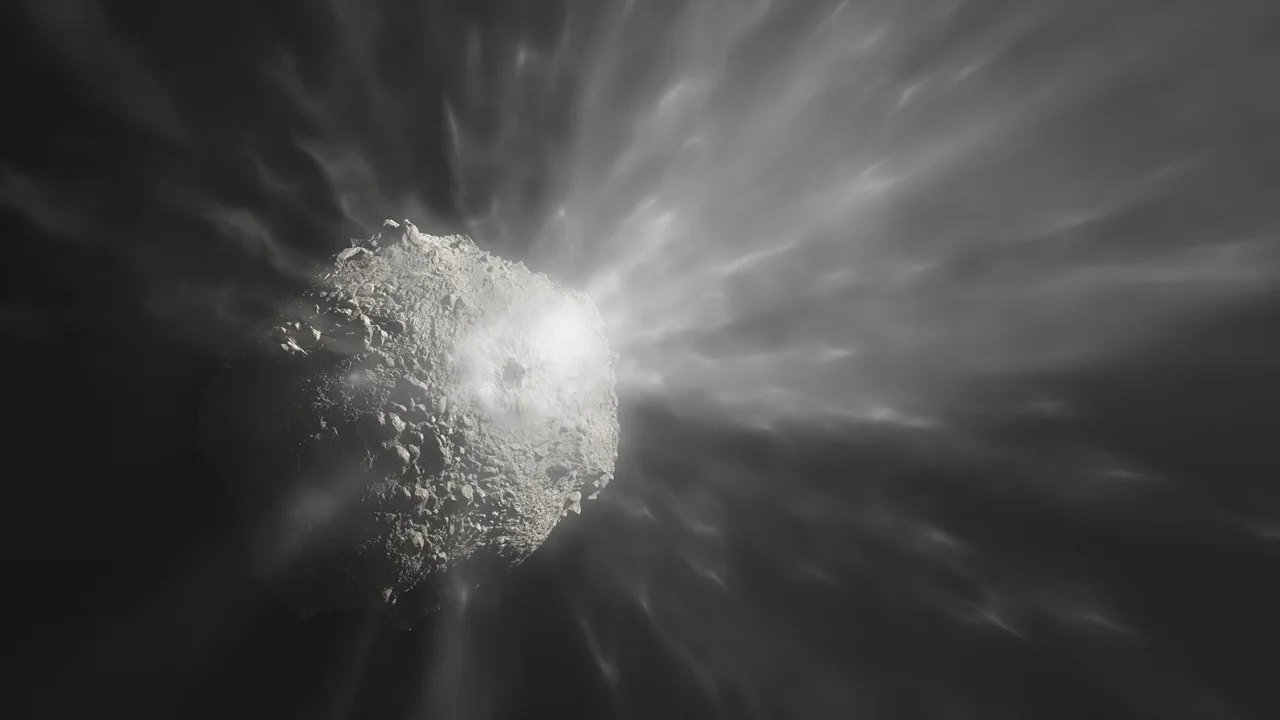Detailed views of the debris streaming out from the collision caused by the Double Asteroid Redirect Test can be seen in new photographs published by scientists using the European Southern Observatory’s Very Large Telescope in Chile on Tuesday.
In an effort to alter the asteroid Dimorphos’ velocity, the DART spacecraft, which weighs roughly 1,200 pounds (544 kilograms), collided head-on with the space rock at a speed of 13,000 miles per hour (20,921 kilometers per hour).
The results demonstrated how this kinetic impact technique could be used to divert asteroids that may appear to be on a collision course with Earth. This was the first time humans attempted to alter the motion of a celestial object.
Both Dimorphos and Didymos, the larger asteroid it circles, are not dangerous to Earth.
The DART impact was successful, changing Dimorphos’ orbital period around Didymos by 33 minutes. This first test of planetary defense, which took place 7 million miles (11.3 million kilometers) from Earth, also released tons of material into space.
Two different teams of astronomers used the Very Large Telescope to study the aftermath of the event.
“Impacts between asteroids happen naturally, but you never know it in advance,” said lead study author Cyrielle Opitom, an astronomer and chancellor’s fellow at the University of Edinburgh, in a statement. “DART is a really great opportunity to study a controlled impact, almost as in a laboratory.”
Opitom and her fellow researchers tracked the debris cloud that resulted from the collision for a month using the telescope’s Multi Unit Spectroscopic Explorer instrument, also called MUSE.
The cloud of rocks and debris initially blasted off of Dimorphos’ surface first appeared to be made of fine particles. Days later, the team spied other structures in the debris cloud, like clumps and spirals of larger particles, as well as a long cometlike tail streaming behind the asteroid.
The MUSE instrument allowed the researchers to look at the cloud through a rainbow of light to look for telltale signatures of chemicals and gases. But the team couldn’t detect any water or oxygen.
“Asteroids are not expected to contain significant amounts of ice, so detecting any trace of water would have been a real surprise,” Opitom said.
The team also kept an eye out for any trace of the DART spacecraft itself, including the propellant it used to journey to the asteroid.
“We knew it was a long shot, as the amount of gas that would be left in the tanks from the propulsion system would not be huge. Furthermore, some of it would have travelled too far to detect it with MUSE by the time we started observing,” she said.
Other recent research included a “movie” captured by the Hubble Space Telescope showing the evolution of the asteroid’s new tail and just how many tons of material were sprayed into space at impact.

